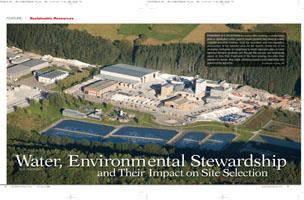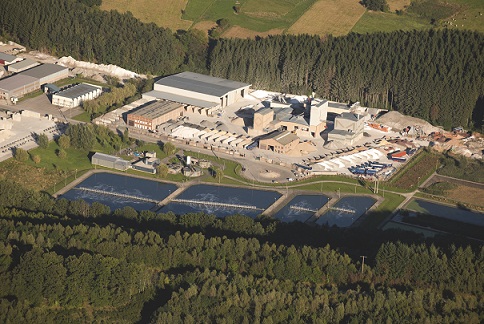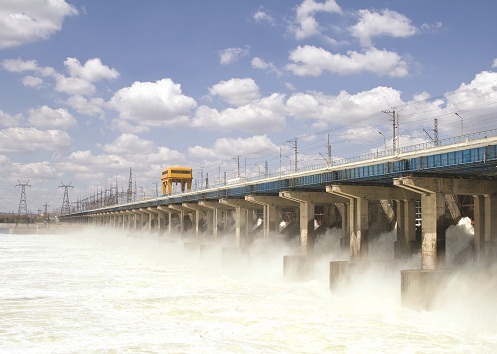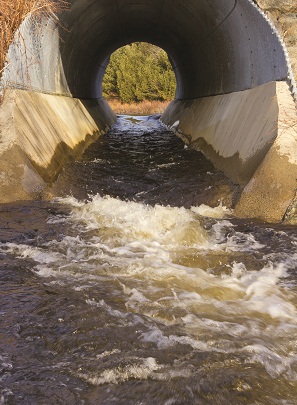
 Finding a location for a new office building, manufacturing plant or distribution center used to require location executives to mainly consider potential revenue, local tax incentives and the regulatory environment in the selected area. As the country moves out of the recession, companies are beginning to revisit expansion plans to meet expected demand escalation and, through this process, are increasingly aware of how their treatment of the local ecology can alter their workforce’s morale, their public relations presence and relationship with governmental agencies.
Finding a location for a new office building, manufacturing plant or distribution center used to require location executives to mainly consider potential revenue, local tax incentives and the regulatory environment in the selected area. As the country moves out of the recession, companies are beginning to revisit expansion plans to meet expected demand escalation and, through this process, are increasingly aware of how their treatment of the local ecology can alter their workforce’s morale, their public relations presence and relationship with governmental agencies.
A new consideration for executives is centered on corporate sustainability, the ways in which the organizations’ choices can affect the environmental and cultural health of the area. Being more “green” does not mean the company merely has a new promotional branding angle; it can also help the company realize hard costs savings due to reduced energy or materials consumption. Focusing on a more sustainable business typically requires optimization of certain systems, and optimization can translate into direct hard cost savings. Corporations are increasingly asked to provide data on the CO2e for each of their products and other metrics that provide a picture of their overall sustainability.
Retailers such as Walmart currently ask for sustainability information as part of their own sustainability index which requires information about water usage and other environmental footprint issues. Suppliers are certainly paying attention when the largest retail chain in the world asks for information. Such requests are figuring into company location plans as they can’t risk building on the wrong site or losing business to competitors due to poor sustainability metrics.
 Water Becoming a Vital Site Consideration
Water Becoming a Vital Site Consideration
As water resources throughout the world increasingly are strained, company executives need to look beyond incentives and workforce considerations. Areas such as the southwestern United States face considerable pressure on water conservation, as agricultural and residential usage vie for limited resources with the corporate community. According to the United States Geological Survey’s most recent assessment in 2005, the daily withdrawals of water for industrial uses was 18,200 million gallons a day. With freshwater accounting for only three percent of the total water on Earth (much of which is not accessible), water conservation and usage will become an increasingly important topic as conflict between nations and disagreement between states rises over water usage right.
Despite such concerns, when it comes to corporate sustainability, water management is often overlooked. Carbon footprint, paper usage and recycling, and power reduction best practices are more often the cornerstones of a corporate sustainability plan. Water is just starting to become a vital consideration when selecting a location for companies that are not directly involved in the production of goods and services that require the use of large water quantities. As climate change pushes the likelihood of a hotter and drier United States, and the demands of the overall population increase, water usage and management is becoming a top line item for corporate managers.
Many investors and shareholders are also coming to expect companies to be better environmental stewards, with various certifications and sustainability rankings coming into play. Programs such as the EPA’s WaterSense provide certification to certain products that are deemed to be manufactured using less water due to improved operational processes. Just as promoting an item is made from “100 percent recyclable materials” or “produced using sustainable energy sources” can be an attractive branding statement, making a similar case for water smarts is a trend that will accelerate. Intelligent businesses will choose locations that allow them to meet such certifications and use them for end customer acquisition without undue expense.
Broader Issues Surrounding Water and Corporations
Water considerations are coming to the forefront for many business executives who not only need to consider revenue and production issues if water sources run low, but also the broader community affects from their usage of water. Previously companies mainly looked at water as simply a question of available supply, needing an answer to “is there enough.”It’s now a multi-faceted question exploring not only quantity but also quality, both of the existing water supply and the water conditions after they run through a facility.
As state and local governments move toward the capping of energy usage to control the climate and considering the implementation of reporting requirements such as the EPA’s Mandatory Reporting of Greenhouse Gases Rule, a similar future for water reporting and management is possible. Water is, of course, already managed in the regulatory realm, with myriad standards, but the bulk of the regulation is localized, with municipalities controlling water quality. For the executive tasked with choosing a company location, it’s important to consider the longer-term water inputs and outputs and the implications they might hold for their particular business.
The acquisition, use and management of water translate directly into the company’s carbon footprint. For example, if the water for a manufacturing process needs to be transported at distance, then more energy is used which promotes the formation of corresponding greenhouse gases. Many processes require rapid heating or cooling of water for production processes, both of which utilize significant amounts of energy. In California, with the upcoming cap and trade system, conservation and better processes for water will translate into lower energy costs through carbon offsetting and credits coming back to the company.
 Water Footprinting Methodology
Water Footprinting Methodology
An important step in modern facility site selection is to employ an advanced water footprinting methodology. Such methodologies are built upon many of the considerations used to gauge carbon footprints. The core goals of water footprinting are to properly judge key factors including; where the water comes from, how much will the business use from each available source, and is the resource stable or projected to be at risk. Detailed analysis must first be conducted to determine how much water the company will require in a given timeframe, both the traditional office usage, and the use within any sort of manufacturing setting. You need to look at the raw data to see how the water coming in will translate to goods produced out, and be sure to include long-term modeling that assumes substantial growth.
As water shortages rise and regulations tighten for its usage, it is likely certain geographical areas will become better suited for the location of certain enterprises. A plant that utilizes large amounts of water in a drought-stricken area can change the social fabric of the town or city. It’s similar to the phenomenon of oil boom towns in the upper Midwest or other locales, where an influx of labor stretches a town’s other resources such as energy, housing and food. Many towns in these situations ironically have trouble getting enough gasoline for residents or to operate equipment. Knowing there is a water shortage changes, for example, the type of housing, with more high-density structures as opposed to large and landscape-intensive lots.
Executives who want to locate to a new area need to develop a deeper understanding of both the town’s current landscape and the social impact of their water operations and add this data into their site selection plans. In response to shortages and water pressures, some localities are actively promoting their area’s water abundance or quality. In Milwaukee, for example there is a water council that actively promotes smart water conservation and research and the area’s abundance of fresh water supplies. Facility planners will be well served to review which localities have such involved water management resources to find the ideal fit for their projects.
 Possible Scenario
Possible Scenario
Consider for an example a candy manufacturing firm that wants to construct a new facility to meet demand for a new line of sugar-alternative products. After review of the main costs for the facility including materials, average labor wages, electricity and others, the planning team decides on a location and moves forward. What if wastewater was overlooked, or the amount of water required was underestimated? If the wastewater was not entered into the site selection documents, it can produce some longer-term headaches for the manufacturer.
If the candy facility requires a certain gallons-per-minute flow of water that has a certain biochemical oxygen demand (BOD), then there will be a monthly cost for treatment at the local publically owned treatment works (POTW). For reference, BOD is the amount of dissolved oxygen needed by organism in water to break down organic material over time. If the estimated amount of required water was low at initial assessment or the POTW raised its rate structure, then the facility can be in for a surprise that will cut into profit margins. If a thorough investigation of the wastewater scenario was performed prior to actual construction, some of this problem could have been averted.
Perhaps the company would choose a different location where water could be discharged under regulations to a pond instead of the POTW. If the site location is ideal for other reasons, then the location management team could proactively contact the POTW to gain information to better estimate costs which could be factored into the overall picture.
Another option would be to plan for a better wastewater recycling system, using filters and pumps to remove matter and effectively reuse water for lowered consumption. This would be a move with more initial costs for the candy company, but longer term-gains in efficiency and the opportunity to promote this sustainability with partners or even use it as a brand proposition.
 Adverse Effects of Water Runoff
Adverse Effects of Water Runoff
Beyond a review of the water source and its viability and your business’s effect on the water table, the location assessment should uncover other adverse effects from water runoff. Nutrient pollution is a costly issue that results from excessive nitrogen or phosphorus that is found in the water supply or in emissions. Both nutrients are present in natural waters, but if presented in overabundance they can cause accelerated aquatic plant life growth, which chokes out oxygen and leads to decreases in aquatic life. In extreme cases, such overgrowth can limit boat transportation both for industrial and recreational purposes.
These excessive nutrients come from agriculture and the production of fossil fuels, and also storm and wastewater runoff. When considering a site location, a review of stormwater runoff should be performed to determine how the business might contribute to nutrient pollution. Hard surfaces such as parking lots and roofs collect and channel water which then picks up surrounding pollutants.
Site managers who are participating in the scouting of locations will be well served to investigate better treatment systems that can incorporate stormwater capture. The EPA produces guides such as the “Industrial Stormwater Monitoring and Sampling Guide” which provide measurement tools for facility managers to properly handle the process of stormwater collection and testing. While complete testing cannot occur before breaking ground on a new project, many firms have previously built locations which can serve as stormwater and water usage benchmarks.
With integrated wastewater and recovery systems working in tandem, companies can ensure a majority of water is recovered and managed before it goes back into the local system. Finding a way to reuse wastewater safely and effectively provides an avenue for additional savings, especially if the reuse can be managed in-house by the firm, which should lower the energy footprint and costs.
Look Deeply at Location When Reviewing Water
Water is a resource that is being pushed to scarcity and corresponding higher costs. Companies need to look at a location much more deeply when reviewing water, beyond simple assessments that just examine quantity. Water deserves to be treated as a complete loop, where the water sent back into the system should not jeopardize its future use. Companies that ignore water usage and treatment issues before selecting a site for a new office or manufacturing facility risk both capital and the surrounding environment needed by their workforce and the general population to thrive and support the business’s existence.

